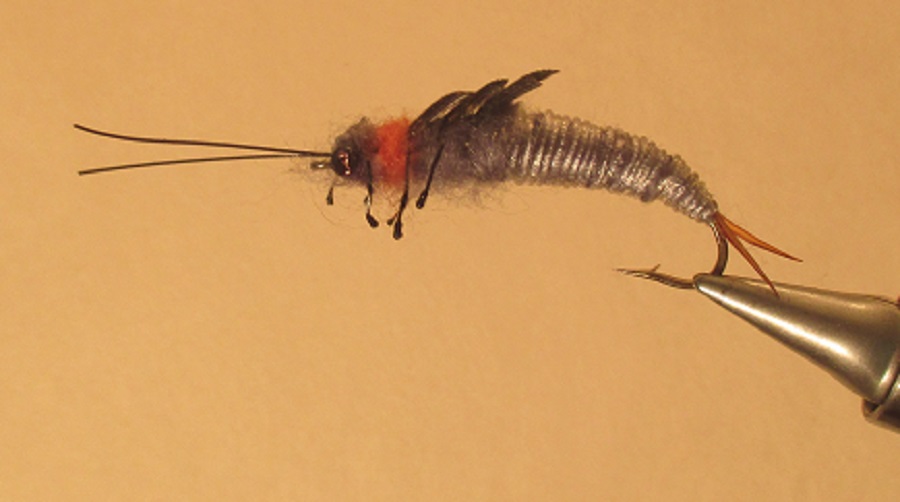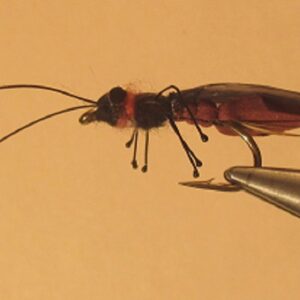Hook Size: 4/6
The Perfect Fly Salmonfly stonefly nymphs crawl out of the water to hatch in the mid to early afternoons and on into the evening. The hatch into adults on the banks or rocks out of the water. You should fish the fly near the banks while they are hatching.
The nymphs of the pieronarcys californica species, known as the Salmonfly, are huge. It
doesn’t take many of them to interest the trout or to get them to feeding selectively on
them. When the hatch is on, you can spot them moving across the bottom of the stream.
Like most all stoneflies, the salmonflies crawl out on the banks and rocks to hatch into
adults. Most activity takes place during the evenings but some hatch during the day,
especially if it’s late in the day or early in the morning. Overcast, rainy days usually
provides good nymph fishing but that’s not a requirement. Trout can be taken to some
extent all day long on the nymphs, especially during large hatches. Trout get accustomed
to seeing them and feeding on them and seem to accept imitations presented anytime
day or night.
The weight of your imitation is very important. It should be heavy enough to stay on the
bottom. Using added weight helps but the fly itself should be weighted at least to some
extent. You can easily find the large nymphs by picking up smaller stones on the bottom.
They are usually mixed in with other caddisfly and mayfly nymphs. Although they look like
they could bite you, they don’t. When the Salmonflies are hatching, you can always find
their shucks along the banks. If you examine the bushes along the banks of the stream
you will most always be able to find the adults. They live a relatively long time out of the
water and are easy to spot due to their large size. In fact, if the hatch is prolific the
bushes will be loaded with the stoneflies.
The hatch moves upstream, sometimes as much as three to five miles a day. This
distance strictly depends on the changes in elevations, weather and the associated water
temperature. If the weather is stable the water temperatures are usually warmer at lower
elevations than higher elevations. As the water warms upstream, the hatch progresses
upstream. Of course, a cold front can change these conditions quickly. Very warm
unseasonable weather can speed the hatch up. Those anglers that have never fished
the hatch should certainly try to catch it one season. It is a spectacular event to behold.
Nymph Presentation:
During the hatch the trout are used to seeing the large nymphs move across the bottom
to the banks. If you have a clear area, we suggest that you walk along the banks and
present the nymph imitation very close to the bank using very short cast in an upstream
direction. This way you can cover a lot of water without spooking the fish.
Make sure you bring the nymph imitation all the way back to the bank. There isn’t much
need to be casting far out into the stream. Time is spent more productively presenting
the nymph close to the banks where the trout are obviously waiting on the nymphs to
crawl out of the water.
If the banks are lined with trees or bushes and you must wade, we suggest you wade in
the middle area so that you can reach both banks. If the stream is too wide to do that,
you should choose what you think is the best bank and wade just far enough away from it
to cover it well. Again, the idea is to keep the fly near the bank. That’s where the trout are
used to seeing most terrestrial insects.
It’s much better to make a lot of short cast with get short drifts than to try to make long
cast and get a long drifts.
Copyright 2013 James Marsh

